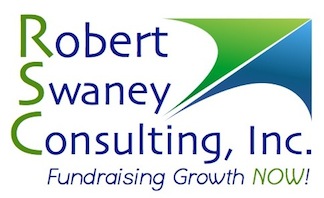contributing writing by RSC Senior Consultant Jeremy Hatch, cfre
Your season is launched, your direct mail campaign is
underway, sponsorship is at a post recession high and renewals are coming
along. What’s next?
It’s time to task your development committee for year-end
fundraising success.
Before we get ahead of ourselves and send our highly-valued board-level volunteers out into the community to promote our good work, let’s pause for a moment to help your organization avoid a lot of pain and panic by first examining a short list of what a Development Committee is not (or shouldn’t be) and what it is (or should
be).
Your Development Committee...
IS NOT:
A group that meets monthly, forevermore, to throw around names, eat
the bagels, and talk about things that have no immediate effect —“We can approach Mr. Smith after the divorce finalizes and once the leveraged buy-out is approved.
In 2018.” Too little. Too late.
IS:
Focused on specific prospects for this year with the
urgency of a fixed deadline (year-end, before Thanksgiving, in time for the
school series) and aimed at prospects with whom volunteers personally know and can ask for support.
IS NOT:
Responsible for direct mail solicitation copy. Give ten earnest
volunteers the opportunity to edit your solicitation letter and you will have
yourself ten rounds of edits and a month long delay getting our the renewals...and still no peer-to-peer follow-up calls.
IS:
Coached by staff to articulate in a personal way the
mission of your organization. Not everyone is a natural salesperson but all
volunteers can open doors and facilitate relationships -- which is a highly-valued and irreplaceable asset.
IS NOT:
A reactive group evaluating and / or criticizing the Development staff’s
efforts and plans, after the fact.
IS:
In partnership with staff to make specific financial asks
to prospects. This is a challenge for volunteers everywhere. Too often our
volunteers want to send an email or plan to chat up their prospects in a casual
setting. The "partnership" approach is well-planned, more thoughtful, more focused and more personal.
As a successful board-level volunteer who is focused on fundraising results, you need to:
- Be Prepared: Know your prospect (don't just "take a name") and then study what you can about him / her. What this giving history? What's this year's target? Does s/he give to other places? Does s/he make gifts through a family foundation? Is there a special affinity for giving, such as education and outreach? Let the staff help you by preparing you with as much background information as they have available and then prepare for your call.
- Be Comfortable and Confident: You are representing a dynamic organization worthy of investment. Your organization is likely a great "sell".
- Be Yourself: Tell the organization’s story in your own words. Make the prospect comfortable. Tell a funny story about your first opera experience or the time you tried to lead the audience in wild applause between movements Mahler's Symphony No. 3. You don't have to be an expert in the arts field, you just have to be yourself -- one person talking to another about why supporting a community treasure is important.
- Be Engaging: Don’t make the meeting about the written proposal or pledge card. Instead, engage in a personal conversation about an organization that is important to you. Ask good questions and listen carefully to what the prospect is saying. Why don't we simply send a direct mail piece? Because we want you to have a real conversation.
- Be Specific: in your request for the gift and with any related points and / or follow-ups.
- Be Purposeful: It is most important that a volunteer approach this work as seriously as you would your own business. The meeting can have lighthearted moments, but always remember that securing contributed revenue is most often the lifeblood of the organization you are representing. Your success is therefore vital to the organization.
Asking for money is serious business -- but it shouldn't incite panic or induce pain. If your organization believes in the power of
peer-to-peer, relationship-based, leadership fundraising, but struggles with
fully engaging your volunteers, click here to contact RSC for information about
how we can support your important work.
We would be happy to help you – and your volunteers – achieve
Fundraising Growth Now!


